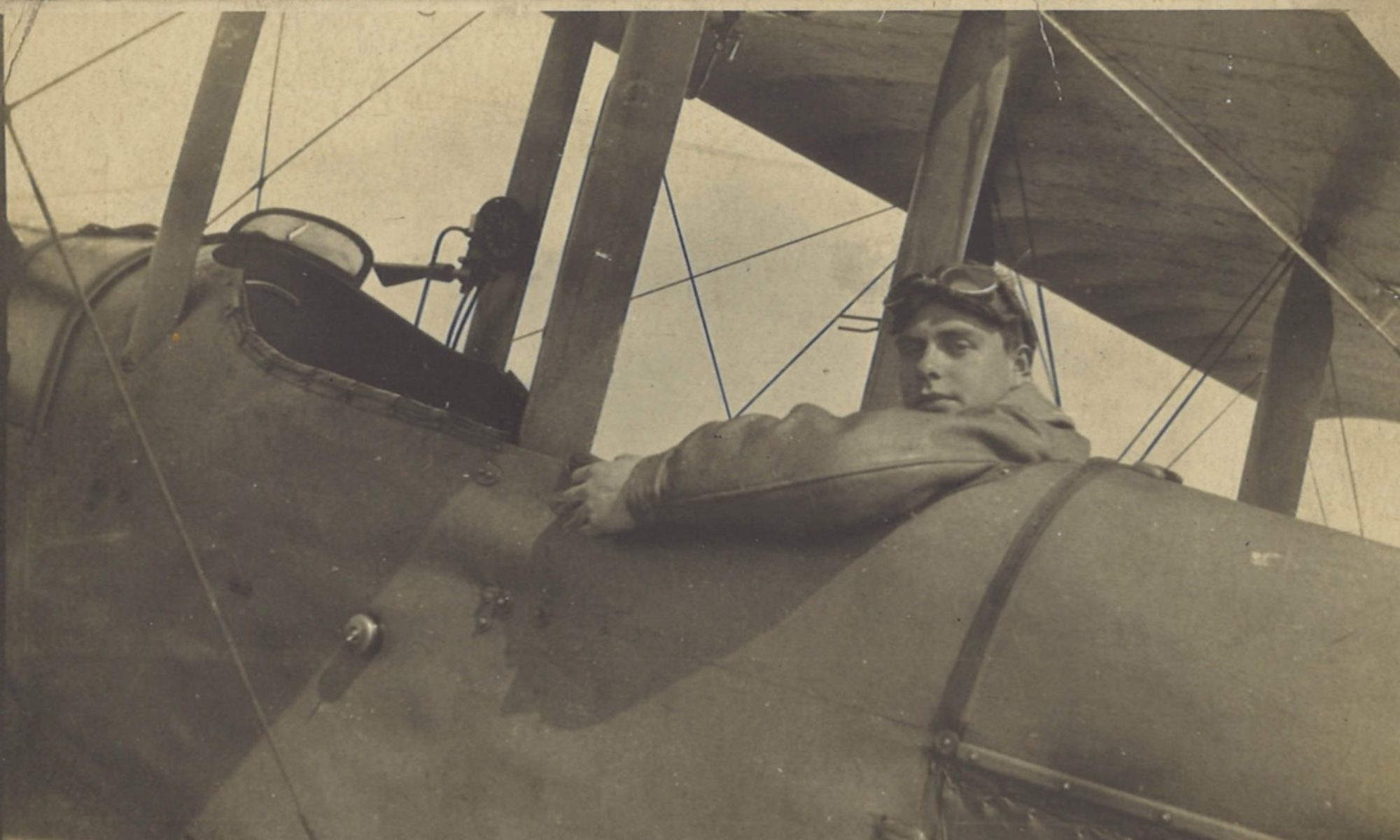In the last flight recorded in his log book, Greg ferried another RE8 from Saultain to Abscon. This time it was 2924, and his passenger was Capt. Gordon.
Log Book

![]()
Date: 1919 Jan 1st Machine Type: RE8 RE8: 2924 Observer: Cpt. Gordon Time: 15 min Height: 2000 Course/Remarks: Travelling to Abscon
Greg’s Last Flight
This was the last time that Greg took to the air at the controls of an RE8. It was some 9½ months after his first ever flight: an air experience trip in a BE2e on his first day of flying training:
And it was exactly nine months since Greg’s first flight in an RE8, on the day that the Royal Air Force was founded:
Total Flying Hours
Greg’s total flying hours up to armistice day had been recorded in his log book as follows:

Since armistice day, Greg had only flown for a further 2 hrs and 20 mins, at least according to the flights in his log book. (I’m still not sure whether he went for joyrides that were unrecorded in his log book.) Although his war flying total was unaffected by this extra time in the air, we can update the other totals as follows:
TOTAL TIME ON RE8s: 193 hrs 5 mins
TOTAL TIME IN AIR: 238 hrs 0 mins
SOLO: 227 hrs 55 mins
With Capt. Gordon at Abscon
So Greg brought Capt. Gordon to Abscon on the first day of the new year. Two days ago he had ferried RE8 2872 from Saultain to Abscon, with only sandbags for company. In this photograph, taken either on or shortly after 1 January 1919, Greg and Capt. Gordon (and Waso the dog) pose in front of 2872:

Although the photograph is undated, the background shows it to be at Abscon Aerodrome. More particularly, we can pin it down to to the northwest edge of the airfield, on the site of the more recently built housing as shown in the photos of Abscon Aerodrome in the post for 30 December 1918.
La Cité Ouvrière
The reason that it’s possible to be so precise about the location is the characteristic housing in the background. It is an example of une cité ouvrière.
This translates somewhat unsatisfactorily into English as ‘a workers’ city’. But that doesn’t properly get the meaning across. French Wikipedia defines une cité ouvrière (in translation) as a “concerted group of working-class housing, generally single-family”. By way of explanation, it continues:
It is originally an essentially residential area exclusively for workers in a particular factory and their families. It can be accompanied by communal facilities. In most cases, it is provided by the proprietor of the factory.
So in English we would probably say model village – but one in an industrial rather than rural context. British examples that have achieved some fame include Saltaire, Port Sunlight, Bournville and New Lanark, but French instances are probably more numerous even if less well known.
In any event, the housing above the rear part of the RE8’s fuselage in the above photo is part of Abscon’s cité ouvrière, named on the 1:40,000 map sheet 51A as la Cité de la République. It’s still there today, forming a rather more appealing living environment than the modern developments across the road on the airfield site:

And the name of the road that separates la cité ouvrière from the site of Abscon Aerodrome? Appropriately enough, it’s la rue du 11 Novembre.


